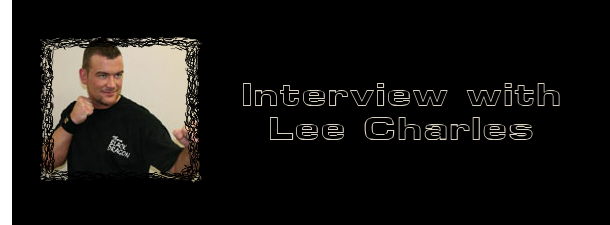BLINK: Providing software for crises in the public relations industry

Public relations can be a tough business and when a client finds themselves at the forefront of controversy—as have United Airlines, Chipotle, and more—it can be a daunting task to protect their image even as it is under fire. Now a new software called “Blink OnDemand Crisis PR” has been created to help companies facing such crises.
“Blink OnDemand Crisis PR” is the world’s only PR planning software that is cloud-based and simple to use via step-by-step instructions. Given how volatile the media industry can be, this software helps protect reputations of both organizations and individuals. The system was created by Laurel Kennedy, a lauded PR guru with an MBA who understands the need for systems such as these. A published author and presenter who has appeared on national television, Laurel’s advice has also been featured on Yahoo, the Irish Times, the Hollywood Reporter, and elsewhere. She has worked with major clients including Pepsi, Kraft, the YMCA and more and has also won various accolades for her work include a National Telly Award and an Addy Award.
Laurel Kennedy is now the President and CEO of Blink OnDemand Crisis PR. She recently took the time to discuss Blink OnDemand Crisis PR and her goals for the organization’s future.
Meagan Meehan (MM) of Entertainment Vine: When did you first get interested in doing PR and how did you break into the industry?
 Laurel Kennedy (LK): Fresh out of journalism school I was lucky enough to become the youngest editor of a trade journal in the country. Running the show at the magazine was a tremendous opportunity, but there wasn’t a lot of upward trajectory in terms of a career path. Several of my friends were with public relations agencies, working on big CPG accounts doing large scale events in major markets with big budgets and A-list celebrities. I was intrigued. Once I got into the agency world, I discovered a natural affinity for the more strategic work like crisis and reputation management.
Laurel Kennedy (LK): Fresh out of journalism school I was lucky enough to become the youngest editor of a trade journal in the country. Running the show at the magazine was a tremendous opportunity, but there wasn’t a lot of upward trajectory in terms of a career path. Several of my friends were with public relations agencies, working on big CPG accounts doing large scale events in major markets with big budgets and A-list celebrities. I was intrigued. Once I got into the agency world, I discovered a natural affinity for the more strategic work like crisis and reputation management.
MM: What sorts of clients have you taken on and did you ever get hit with a scandal that, as PR, it was your job to clean up/control?
LK: The majority of our clients are companies in the food sector, anywhere on the production continuum from field to fork, and healthcare organizations. We work with ethical companies, so we’ve never had to deal with a tabloid-style scandal. Our work covers issues every company may face such as product contamination, recalls, social media attacks, data hacking, employment policies, environmental concerns, special interest targeting and the like.
MM: What can professionals do in these sorts of crises?
LK: Tell the truth. It’s really that simple. Companies need to fight the instinct to “ostrich” a negative situation and go quiet. It’s important in a social media age to be transparent, share what you know and how you plan to fix the problem. Remember that an information void is likely to get filled with misinformation, unless you get the facts out fast. If you create the record, you won’t have to correct it.
MM: How did you come up with the idea and the name for BLINK?
LK: The phrase “crisis strikes in the blink of an eye” kept cropping up when talking with people about crisis planning and response. It seemed like a natural connection people were already making and it checks all the boxes for a good corporate identity. It’s short, memorable, has “stick” and lends itself easily to graphic applications.
MM: How did you make it a reality, for instance, how did you develop the software?
LK: Blink OnDemand Crisis PR is the culmination of two years of concentrated work. It required countless hours of brainstorming different approaches, structures, content flows, segmentations, educational styles, linkages, templates and interdependencies within worksheets. All that before we even did a site map or wireframe. Fortunately, we had a great partnership with McDill Associates in California’s Silicon Beach area. They gave the site a distinctive look and feel that totally captured what we wanted—clean, fresh and approachable. Plus, they had a great programming resource that proved to be flexible and responsive.
MM: Do you feel like your experiences in PR helped you brand and market Blink?
LK: Absolutely, after living in the programming world for six months, it felt like coming home when we shifted gears into marketing mode. It’s our comfort zone. We’re committed to delivering added value to subscribers on an ongoing basis. One example is the links area in the Tips + Tactics section on the Blink OnDemand Crisis PR website which connects people to helpful articles about crisis PR and related topics.
MM: How does Blink work and what features can users expect to find on it?
LK: People often refer to Blink as a “brain in a box”. It’s like having a consultant with over fifty years of experience leading you through the crisis planning process step by step, explaining the what, when, how and why of each element of a crisis plan. There are nine sections and each section has bite-size steps so companies can develop a plan at their own pace, with their own people, for a fraction of the typical agency price.
Expect Blink to be simple and straightforward, with lots of helpful examples, suggested copy and drop-down menus to get you started thinking about things like different crisis types, stakeholder groups, vehicles and media channels. Every worksheet is customizable so you can cover situations unique to your operation. It’s designed so even a novice can follow the steps and be confident they have developed a comprehensive crisis plan. Like so much in life, companies will get out of the program what they put into it.
MM: How do you hope to evolve the BLINK system?
LK: In the near term, we expect to add a Blink Small Business version, a Blink Basic version and specific add-on modules for highly tactical areas like social media. Longer term, we hope to connect with a university partner exploring artificial intelligence applications to literally have the plan write itself. Ready or not, AI will change the world of consulting. Blink represents the beginning of this trend.
* * * * *
To learn more, visit the official BLINK website.


